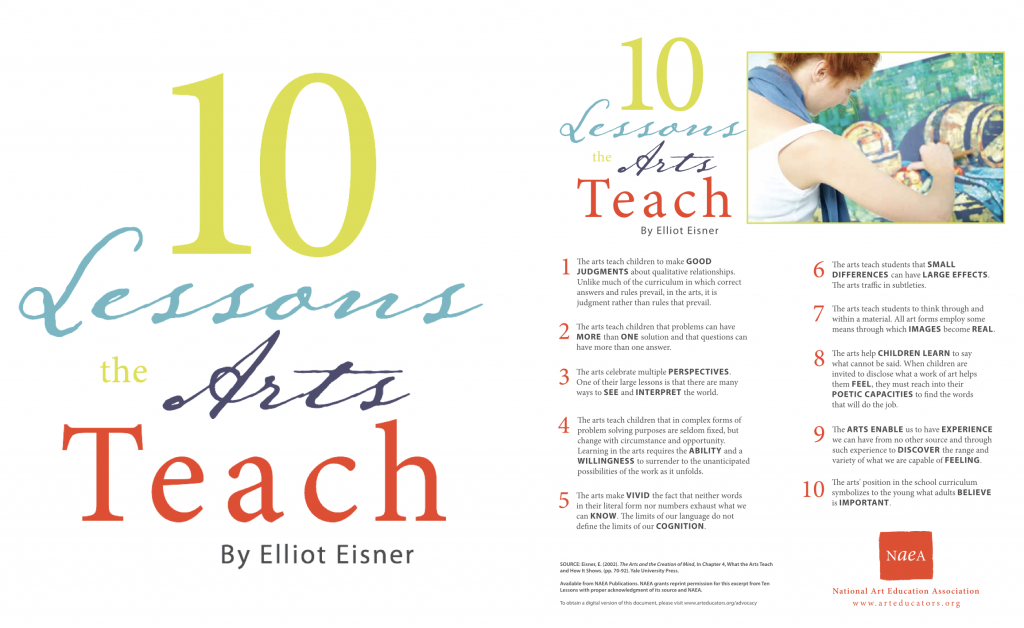
Stop the CRAP-tivities!
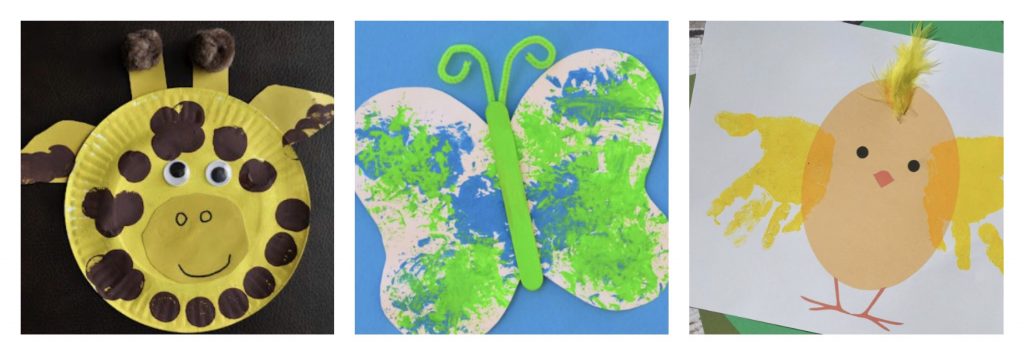
Teaching creativity in schools is a hot topic in education, and I talk about the use, and misuse, of this word a lot.
At a recent conference one of the slides I showed participants really resonated with teachers and created some great discussion across twitter.
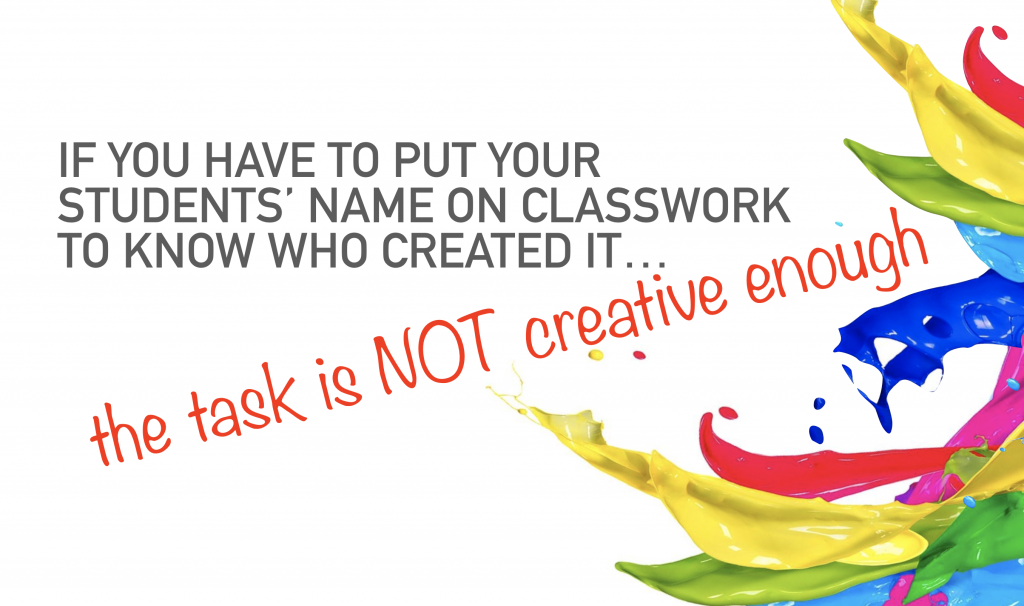
So let’s get straight to the point.
As the slide says, if you have to put a name on the work your students create because it all looks the same, it could be what I call a ‘crap-tivity’.
You know what I’m talking about.
Those paper plate snowmen or handprint reindeers at Christmas time. The identical Easter baskets, all in a row, made from a template. The holidays sure do bring out the worst in this genre, but it happens year round in some classrooms like a giant ‘craft converyorbelt’.
Crap-tivities. It’s a great term, isn’t it? I think I first heard it used about 10 years ago (I wish I was hearing it less all this time later, but here we are).
Our children are creative and curious learners, developing their own ideas and exploring materials. We don’t have to teach them these things, but we can work to nurture these innate abilities. Providing an environment where children enjoy the process of making, not just engage in working towards an end product, is a key component of this idea.
What’s wrong with this picture?
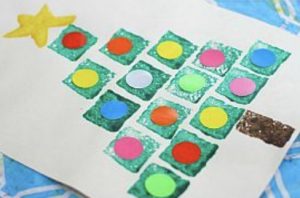 If you’re wondering why I’m so anti-snowman, or perhaps your instant reaction is to try to defend these practices in schools, I’d like to respectfully ask you to consider my reasoning for a moment by sharing some summaries of my responses to other teachers who may have felt the same way.
If you’re wondering why I’m so anti-snowman, or perhaps your instant reaction is to try to defend these practices in schools, I’d like to respectfully ask you to consider my reasoning for a moment by sharing some summaries of my responses to other teachers who may have felt the same way.
“The students enjoy this kind of activity.”
I’m sure that can be true. Kids enjoy a lot of things. It doesn’t mean we have to spend precious classroom time working on this stuff. They can enjoy something else.
“It’s a good activity for fine motor skills, and following instructions.”
I’m sure that could be true, but we can do better. With considered lesson design we can target these same skills in a format that also delivers genuine opportunities for self expression. Considering offering choice, planning for a more open-ended outcome, etc, to move past an isolated skills exercise.
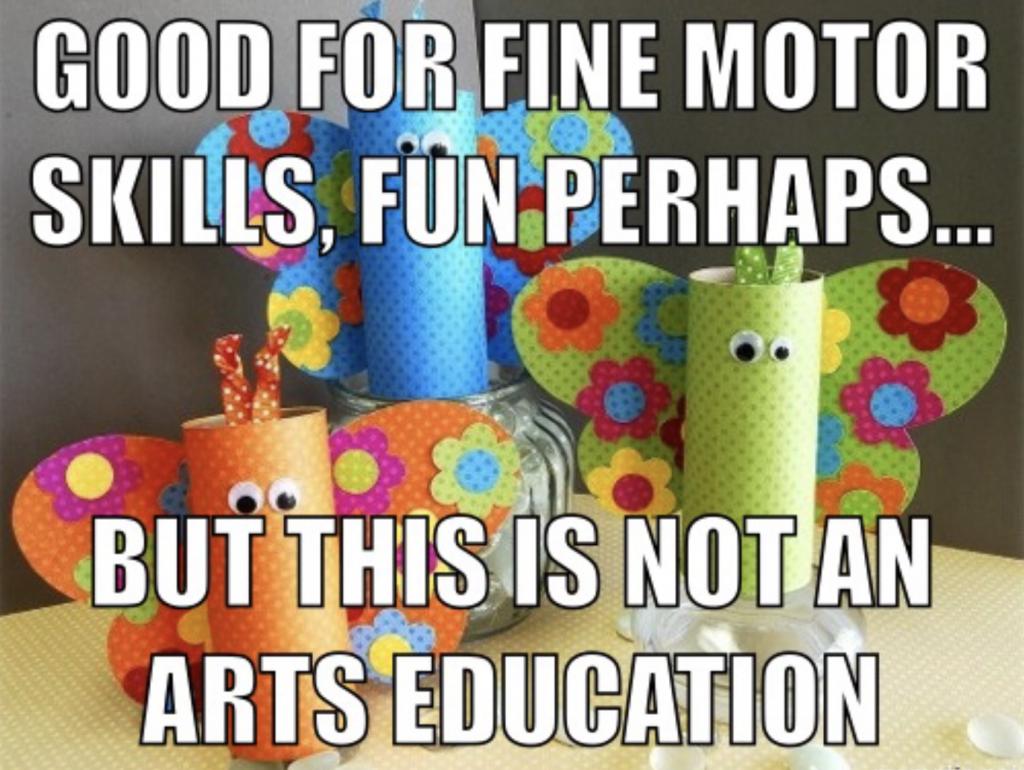
“But parent’s love getting these mementos!’
It begs the question, ‘who are we making these things for?’ If it is for student learning, then their needs come first. There’s no reason why a rich arts learning task cannot also provide a wonderful ‘take away’ for parents, but wouldn’t they also prefer a piece of artwork actually created by their child, not something everyone created in the same way?
The artworks students create are a product of their incredible, unique expressive capacity. It’s so special to collect items they produce when reflect their personality, not a design dictated to them by the teacher. In general, following a step-by-step, generic guide to make something is not a valuable pedagogical or practical approach to a meaningful arts education.
Let’s demonstrate support for our children’s burgeoning personal aesthetic, their powerful imaginations and incredible ideas! Let’s show them we value their creativity and effort by collecting and cherishing what they have authentically made as part of an authentic engagement with the visual arts.
Process or Product?
Is the task focused on engaging in a meaningful process for learning, or is the lesson objective directed towards producing a physical product? The two concepts do not have to be mutually exclusive, but I would say that emphasising the importance of the finished work, rather than highlighting the value within the creative journey, can be problematic. The creative process is an iterative one, and sometimes mistakes present learning opportunities that foster resilience, develop problem solving abilities, etc. Creative confidence develops in environments that are filled with trust, empathy and support, which can be diminished if there is perceived judgement stemming from an emphasis on producing a specific result.
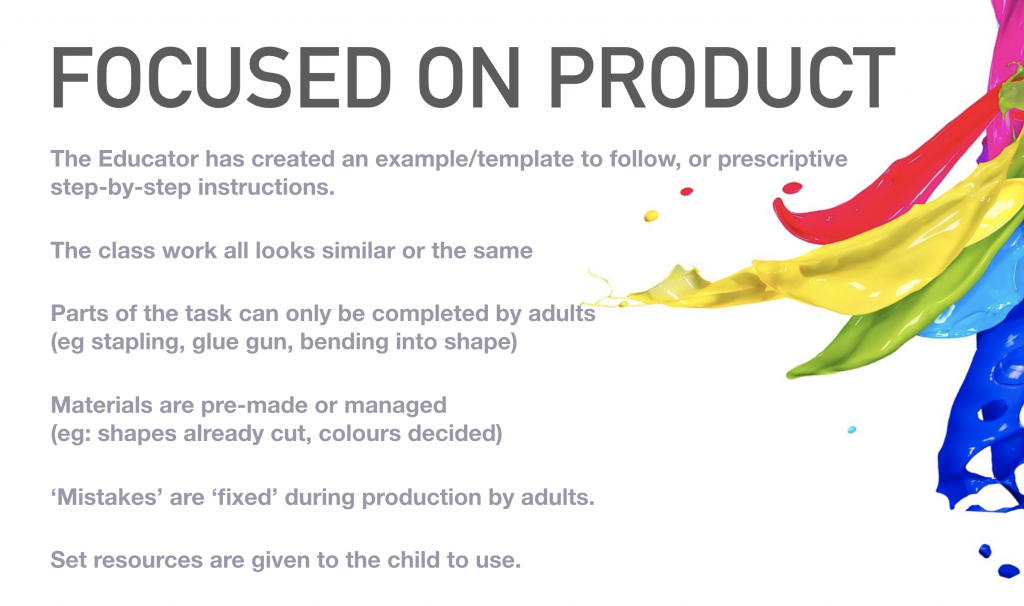
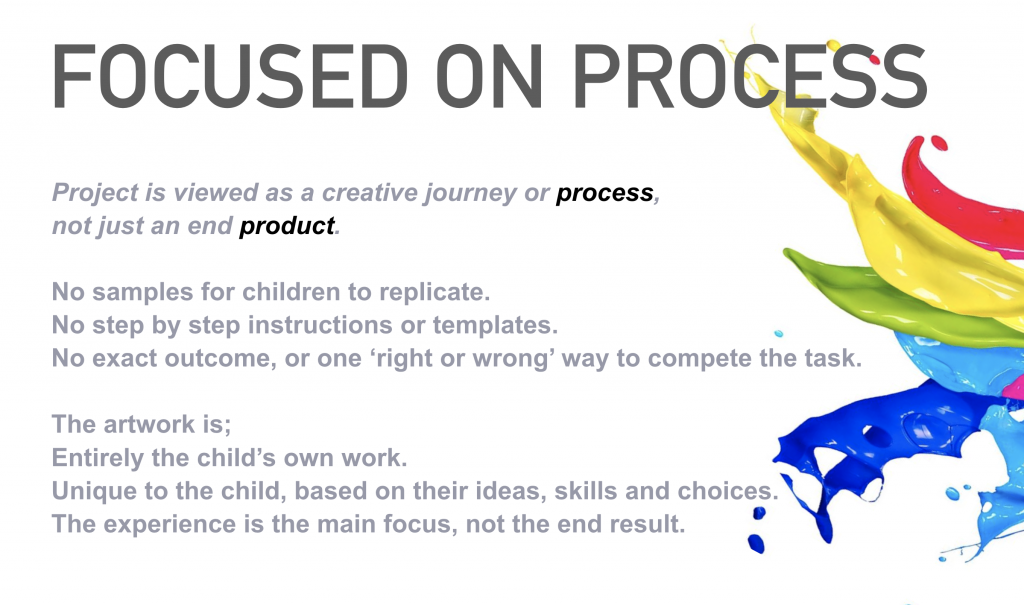
What did the students actually do?
Do you ever wonder how all the bunnies ears got on straight?
When we want to display these kinds of works side by side, there may be pressure on teachers to ‘help’ a student with a guiding hand or a ‘tidy up’ once the work is on the drying rack. But what did the child actually do themselves? In some projects, the answer might be that the students made an easter basket, but on closer inspection, they may have simply performed a cutting task, as the teacher held the paper together and used the stapler to create a basket,
Let’s ask ‘what did the students actually learn’? Could the students make the product again on their own after completing the task? Are these skills made explicit and transferable, allowing them to use them in other ways and to build on them? Were the exciting possibilities and properties of the materials discussed, etc?
Let’s move past crap-tivities!
In a climate of change, where an over-crowded curriculum is increasingly driving ‘making minutes’ down in classrooms, art teachers must advocate for their subject, and demonstrate the value of their programs to the school community. The ‘10 Lessons the Arts Teach‘ is a great resource towards this end.
